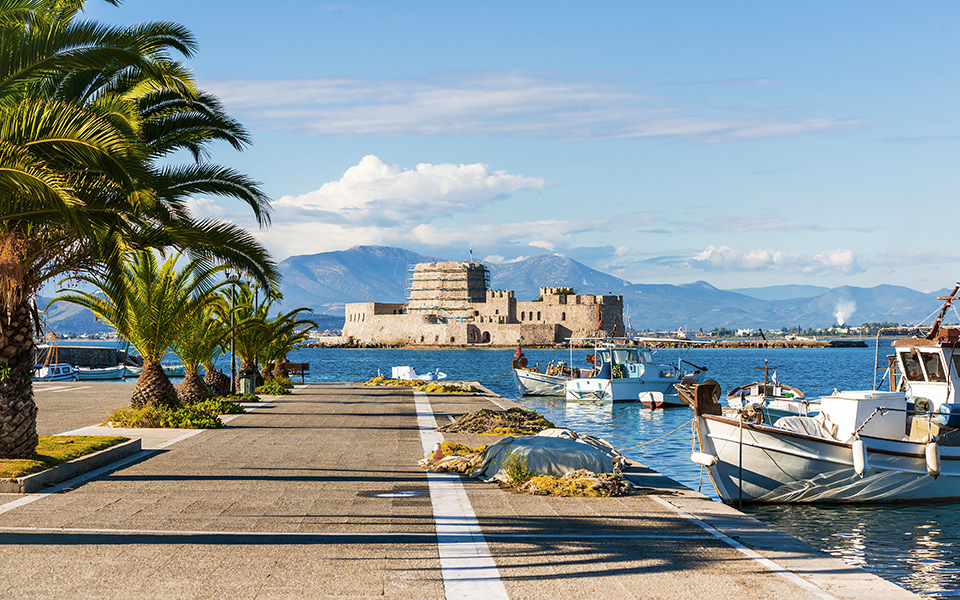Nafplio. A Peloponnesian city that owes much of its current charm to hundreds of years of tug-of-war between conquerors, mainly Venetian and Ottoman, who all invested in the city’s walls, and its beauty. It is, of course, a dream destination for history buffs, with ancient and medieval ruins and even the preserved assassination site of the first head of the Greek state, Ioannis Kapodistrias (you can still see the bullet hole in the wall of Aghios Spyridonas church, where it happened).
The region’s gentle climate makes it ideal for winter excursions, and, thanks to its Venetian legacy (the masters of romantic cities) it has become the place for lovers to spend romantic weekends. But for those more interested in what’s for dinner than holding hands over the table, there’s no need to worry. Here’s how to have a perfect weekend date if the true love of your life is food.
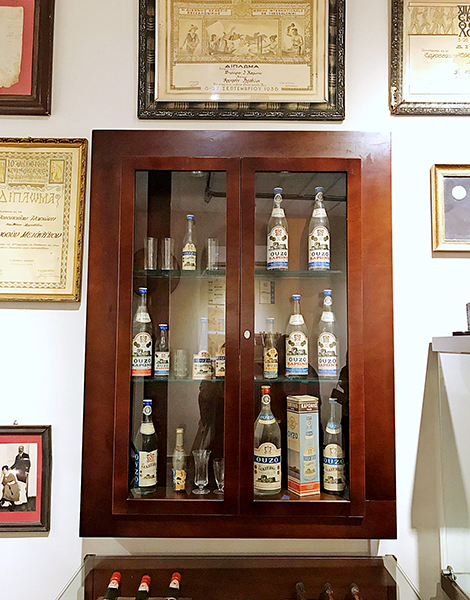
© Paulina Kapsali
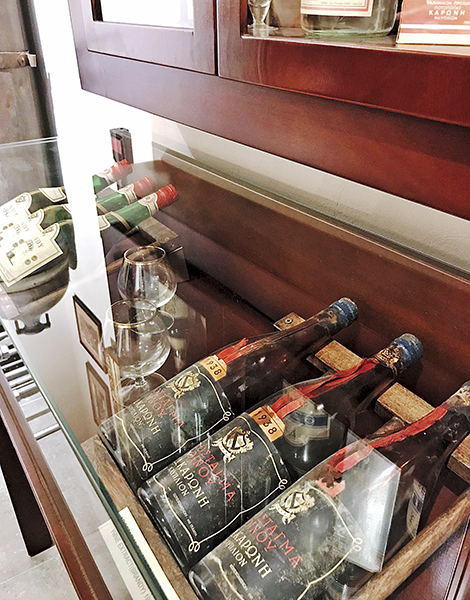
© Paulina Kapsali
Day 1 – Saturday
What better way to get a sense of a town and work up an appetite than with a morning stroll by the sea? The old town, built on a peninsula topped with a fortress, will make you feel as though you are on an island. In the port, the view of the “Bourtzi”, a medieval castle built by the Venetians on the islet of Saint Theodoros, is the first thing you’ll notice (and inevitably get selfies in front of).
Make your way up the picturesque streets, see Syntagma Square and all of the impressive buildings that surround it, including two mosques from different periods of Ottoman rule. One of these was also used as the parliament building during the period when the city was the capital of Greece. In the center of town, on Staikopoulou Street, you’ll find the Karonis Distillery Exhibition and Shop.
Established in 1869, the spirit producing company is one of the oldest in Greece. The exhibition is small and charming, showcasing, among other things, the distillery’s first still, along with the receipt from its makers in France. If you make an appointment beforehand, Yiannis Karonis will guide you through the history lesson that’s hidden in the wooden showcases of the exhibition, as well as take you through the process of ouzo production.
The distillery has been family run from the start, and Yiannis, who owns it today, is a fifth generation Karonis. He makes ouzo, tsipouro, liqueurs, and brandy with the same passion as his forefathers. Don’t leave the shop without a bottle of Ouzo Karoni Special; a potent spirit with lots of anise, and fragrant notes of coriander and fennel. The distillery itself, on the hill of Palamidis above town, is also open to the public for tours and tastings by appointment.
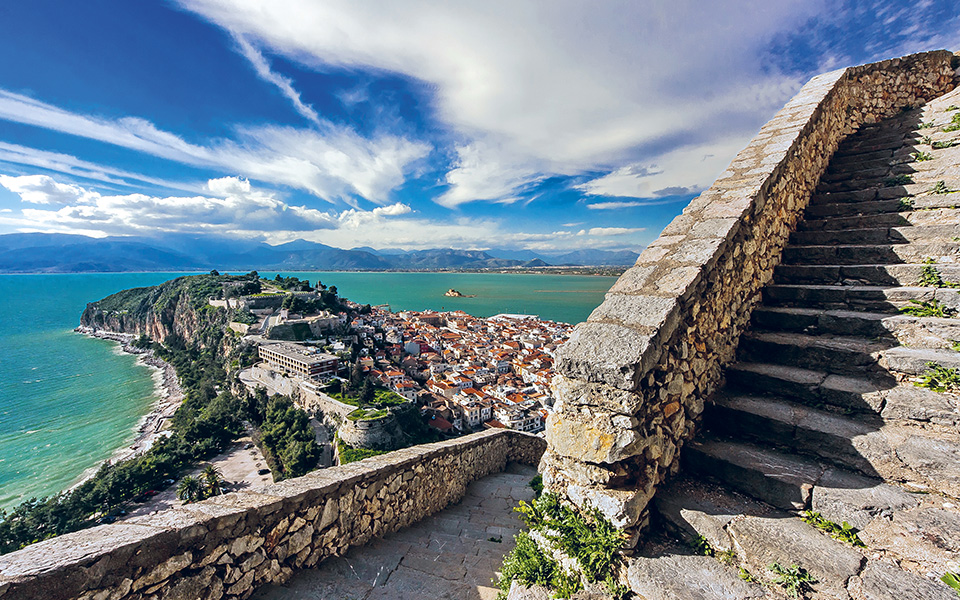
© Shutterstock
The Saturday farmers’ market, right below the Palamidi is open until 14.30. Buy some of the famous local oranges for your journey up to the castle. You’ll need the energy after tackling the (allegedly 999) steps that start right behind the market. That said, if you’re not up for it, you can also drive up.
The oranges of Nafplio and the rest of the Argolis region are a product of the warmer climate. Once you reach the Palamidi castle, the Venetians’ last hurrah on foreign land, you’ll have a view of Nafplio’s old town and newer neighborhoods, the sea, the mountains beyond, and the Argolis valley with all of its orange groves. Give yourself some time to take it all in. The 1714 Venetian fortress with its bastions is impressive in and of itself. Add the view and you’ll need a moment. Eat an orange.
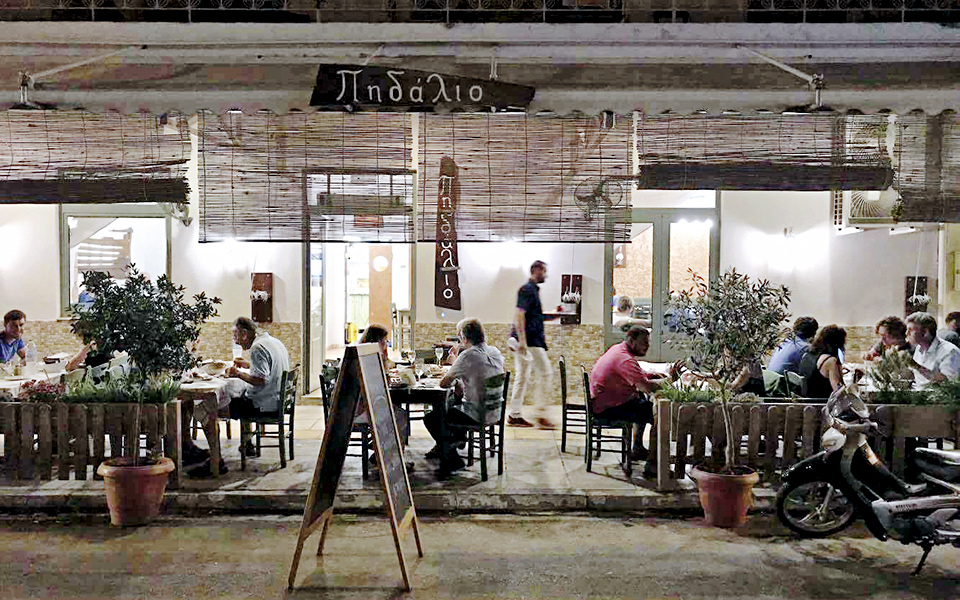
© Paulina Kapsali
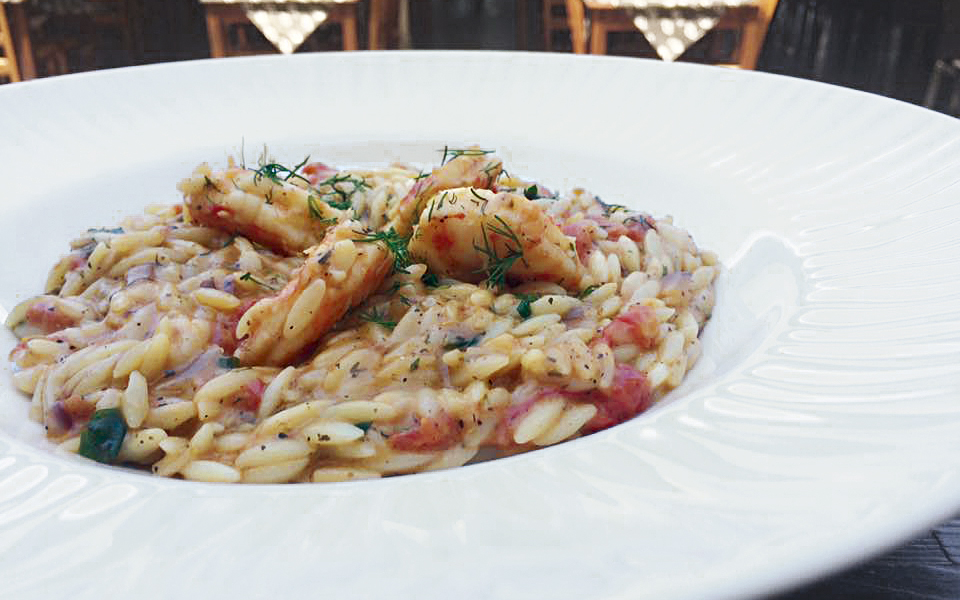
© Paulina Kapsali
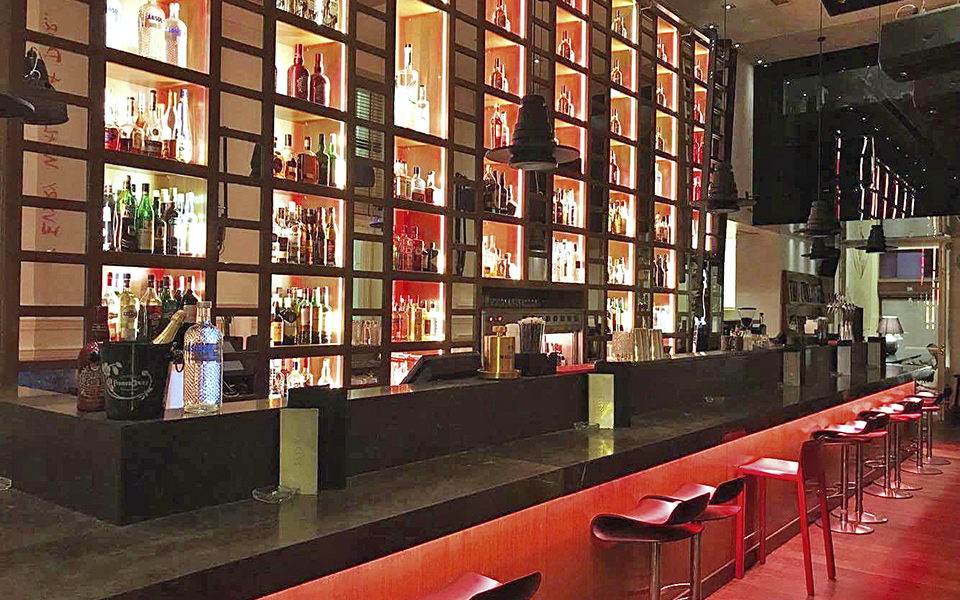
© Paulina Kapsali
After descending the hill, head back to the seafront for lunch at ”Arapakos”. Make sure you order the perfectly grilled octopus, the stuffed and grilled squid, and famous drunken mussels with finely chopped vegetables. For the main course, choose one of the specials; shrimp “orzotto” if it’s on the menu, or the catch of the day. Karonis ouzo is on the drinks list and goes wonderfully with the food, but beware, you’ll need a nap afterwards.
Once you’ve digested your seafood feast, gotten some well-deserved rest, and taken in the old town and the Bourtzi after sunset (it’s even more charming when lit up), it’s time to leave the quaint old town and head for dinner.
Pass the fire station, the now-closed farmers’ market, and the land gate, and follow 25th Martiou Street until you find three recently-opened eateries: “Pidalio”, “Menta”, and “Zournal”.
Locals describe Menta as being an “Athens-style” meze restaurant (meaning that it serves small, contemporary dishes to be shared), and Zournal as being “like Exarchia” – i.e. slightly alternative and hip in the style of the capital’s more bohemian district. Pidalio serves well-cooked, traditional mezes and mains with slight modern tweaks. Be careful, as it’s easy to order too much and end up too stuffed to get up off your chair.
Some dishes are very heavy, like the “skioufichta” macaroni which could do with less cream and cheese, but the baked eggplant with beef in tomato sauce is scrumptious! Served with fries, it’s like a mash up between “papoutsakia” (oven-roasted eggplant topped with minced meat and béchamel) and “kokkinisto” (beef in tomato sauce – often served with fries). The “politiki” is also well worth trying (a salad made with pickled cabbage and carrot); the addition of dried cranberries and nuts, and a touch of extra vinegar takes it from good to excellent.
After dinner, amble back to the old town for a drink at “3Sixty”. This hotel, restaurant, and wine bar also offers a nice cocktail list. How about a “Fig-ure It Out” – with cardamom infused gin, lime, pureed figs, fig liqueur and cardamom bitters?
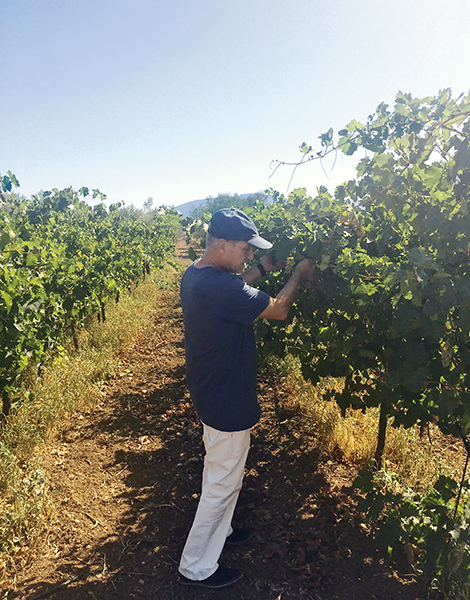
© Paulina Kapsali
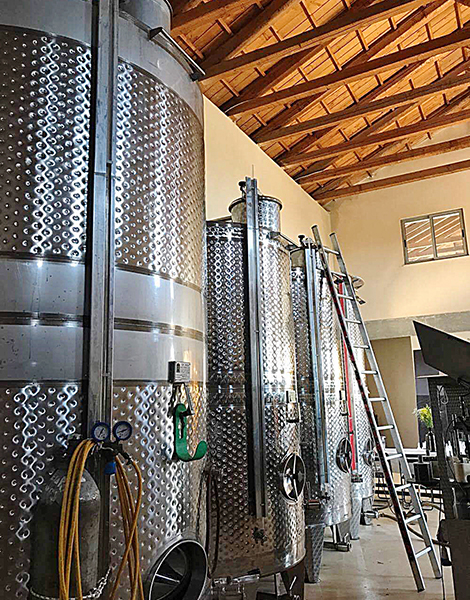
© Paulina Kapsali
Day 2 – Sunday
For the first excursion of the day, you should make an appointment. Koroniotis Winery is small, and Kyriakos Koroniotis runs every step of the winemaking process. A trip here is worth it not just to see the establishment (which, from the outside, looks like it’s been transplanted from the Spanish countryside), or to taste the Malvasia grapes straight from the vine (like perfume for your tongue), but also for Koroniotis’ tales and philosophical musings.
The first thing he’ll tell you is how he misses the word “tasty”. Wine tasting has become so complicated, he notes, and one is always encouraged to immediately try to tease out all of the different characteristics of any given wine. “The most important thing though, which we seem to have forgotten, is – does it taste good?”
So are the award-winning Malvasia, Assyrtiko, and Nemea wines from the Koroniotis winery tasty? Yes, they are. If you don’t buy a few bottles, you’ll regret it. They’re not sold at your neighborhood supermarket.
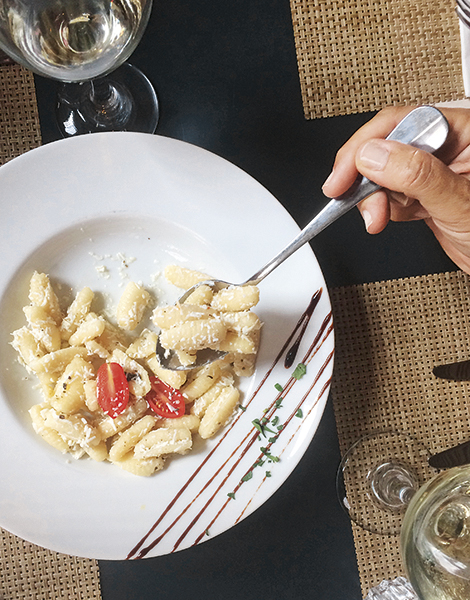
© Paulina Kapsali
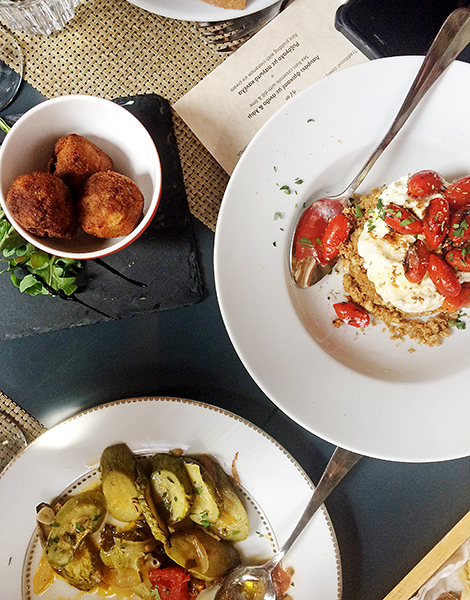
© Paulina Kapsali
Heading back to town, take the opportunity to visit “Fougaro” (meaning “Chimney”); the old canning factory that has been converted into an event and exhibition area by artist Florika Kiriakopoulou. The original stone buildings have been renovated and remodeled, and since 2012 house a gallery, a library, a children’s library and workshop, a restaurant, and a gift shop. The tall chimney is lit up at night and sometimes, as response to some current event, will emit smoke in various colors.
The outdoor area, with its exhibition space and the restaurant’s outdoor seating, doesn’t feel industrial at all; more like the small square of a country village thanks to the pretty trees and the purl of the water installation. Pay a visit to the gallery, where two exhibitions are currently on display; the engravings of Christoforos Katsadiotis, and paintings by Manolis Charos. Both will run until December 3rd.
Chef Nikos Soulies knows what he’s doing in the kitchen at Fougaro’s restaurant, “Le Café”. For lunch, try the fried meatballs with yogurt sauce and the “dakos” salad with crushed rusks and walnuts topped with feta cheese, cream and cherry tomatoes. From the main courses, try the “Goges” – a local type of seashell-shaped pasta, served here with butter and sage, or Italian gnocci with spinach and parmesan sauce.
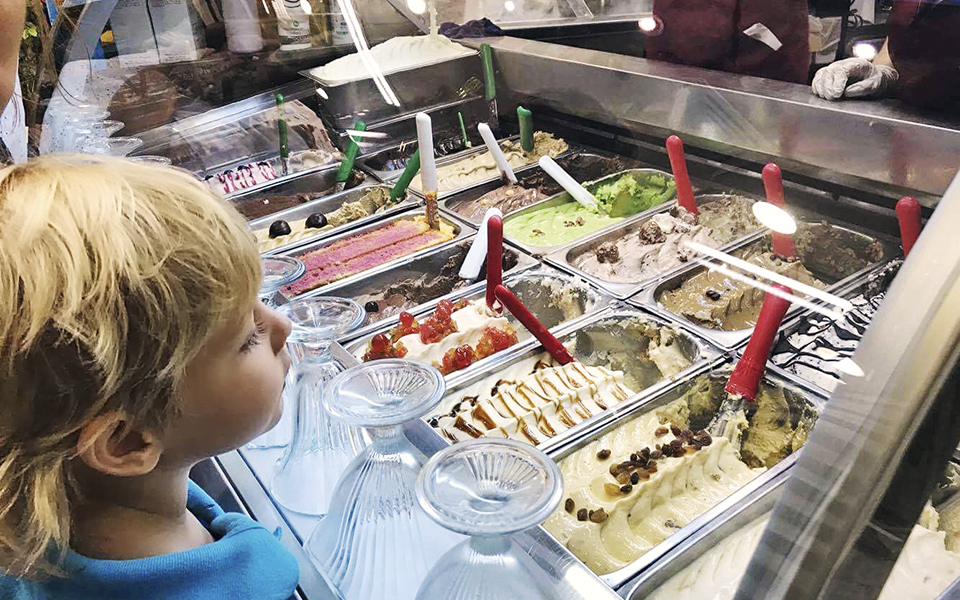
© Paulina Kapsali
Back in town, it’s time for a stop at “Antica Gelateria di Roma”. This is non-debatable. You do not visit Nafplion without having an ice cream, or gelato, and this place is a classic. You can go for their top offerings: the award-winning bitter chocolate or hazelnut (or both – they’re a perfect match), or try a traditional Italian flavor, like the amazing Zuppa Inglese with sponge cake. If you’re in need of something more refreshing, the sorbets are excellent as well.
Finally, before you head home, a bit of shopping is required. The best way to make the memory of a trip last long after you’ve left is to take some local delicacies home with you. Thankfully, most of the shops you’ll want to visit stay open on Sundays.
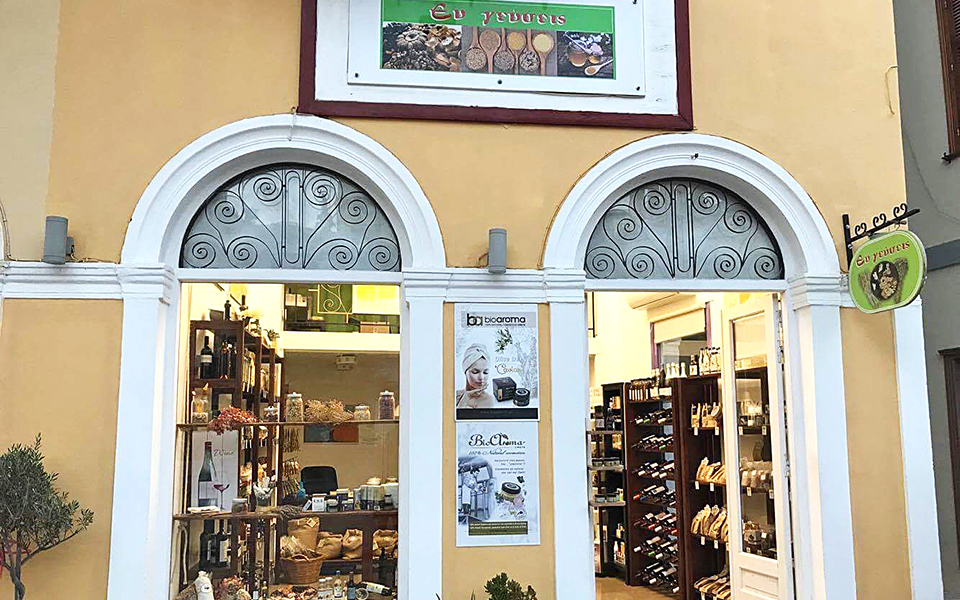
© Paulina Kapsali
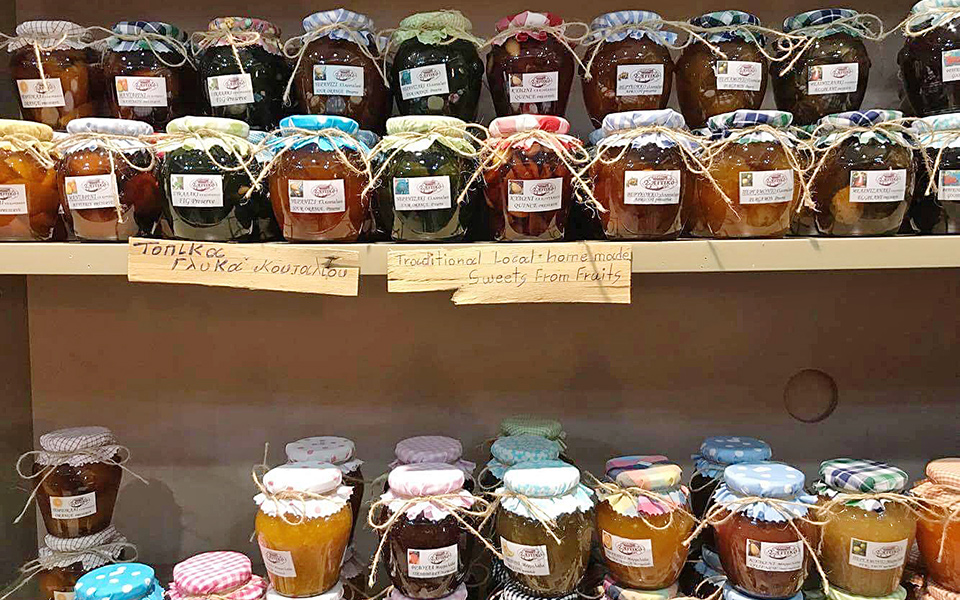
© Paulina Kapsali
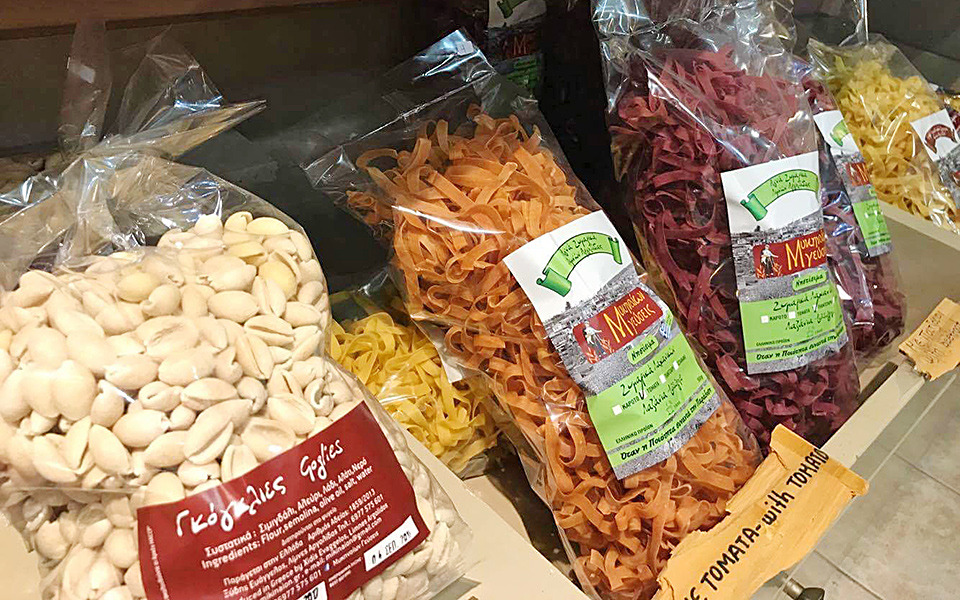
© Paulina Kapsali
Products to buy:
The central streets of the old town are full of shops selling local delicacies. The little family-owned shop “Ev Gevseis” sells lovely fruit and spice marmalades from the brand “Gevsis tis Charas” (Chara’s flavors), while “Honey Nectar Ambrosia”, a store which changes it’s décor every few months, carries products from all over the region. Aside from Chara’s preserves, look out for the orange marmalade from “Mastos” (because you can’t leave without something orange), as well as their wild fig jam (to remember that cocktail). The watermelon marmalade from “Margarita” is also worth a taste. All are organic with no added colorings or artificial preservatives.
Almost anywhere you go in Greece, you’ll find local honey and olives. In Nafplion, the organic heather honey from Ermioni, with its mild buttery flavor, is our favorite. If you want olives, go for those called “Damaskinoelies”.
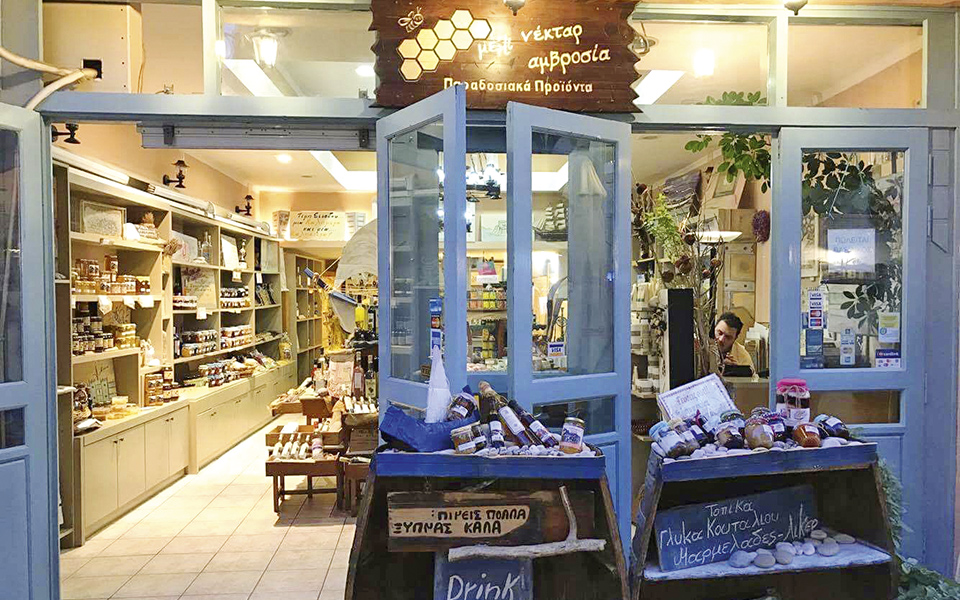
© Paulina Kapsali
More specific to the area are the “Goges” pasta which you can find at every delicatessen in town. If you’ve been organized enough to bring a cooler on your trip, you should also purchase some cheese. The “soft cheese” and the graviera cheese with cardamom from “Triantafyllou” are real treats.
If you’ve done your shopping right, when you get home, you can relive your Nafplion adventure with a feast of goges with grated graviera (copy chef Soulies at Fougaro and toss them in butter browned with sage), and soft cheese with wild fig marmalade or heather honey for dessert. Wash it all down with a glass of Koroniotis Nemea.
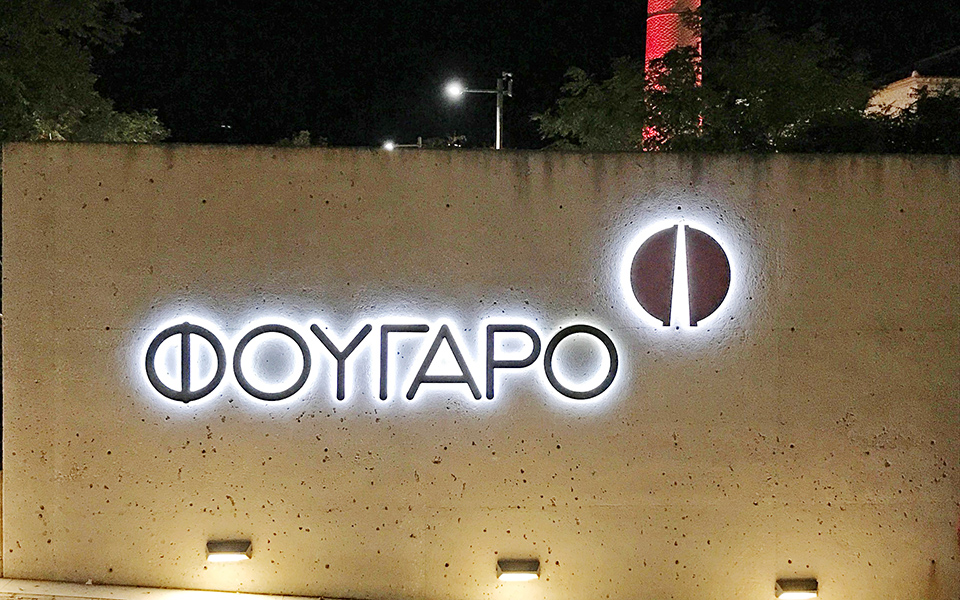
© Paulina Kapsali
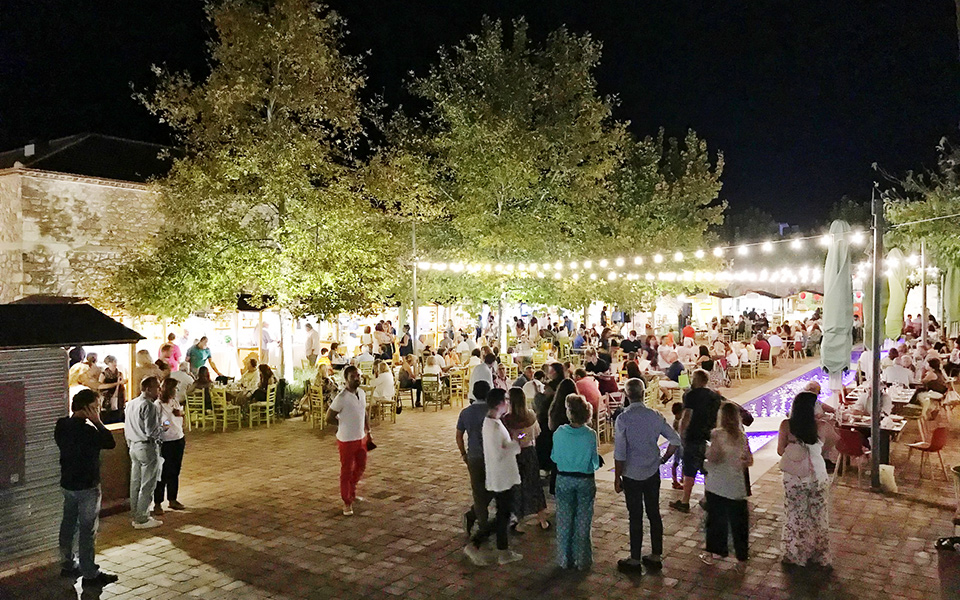
© Paulina Kapsali
“The Fruits of the Argolis’ Soil” exhibition at Fougaro
The annual exhibition “The Fruits of the Argolis’ Soil”, dedicated to promoting small producers of the Argolis area, took place for the second time on the 13th-17th of September at Fougaro, Nafplion. Along with musicians and a street food event by celebrity chef Gogo Delogianni, 18 businesses from Argolis took part, showcasing their products to guests who sampled their preserves, sauces, juices, traditional spirits, cheeses, olives, wine, honey, herbs, pasta, ice cream, and more.”

